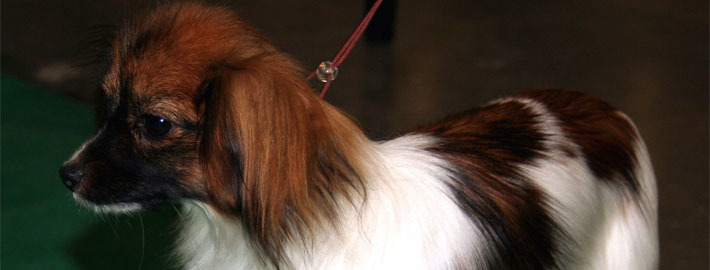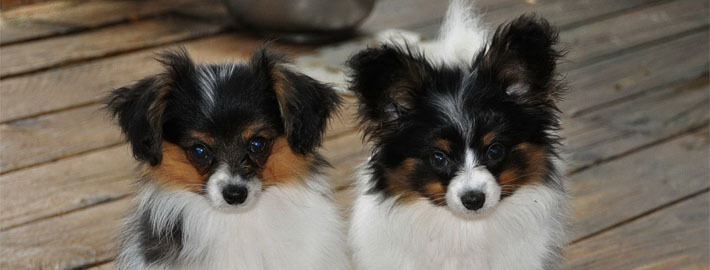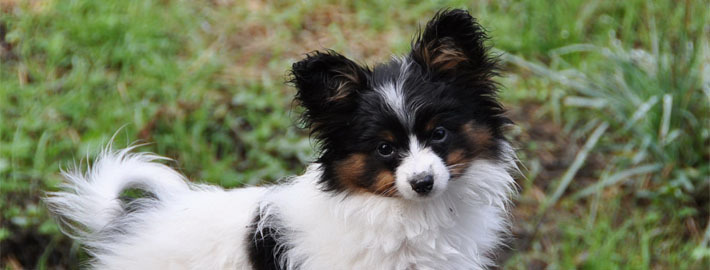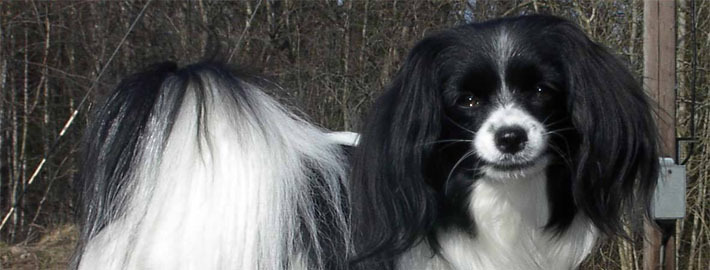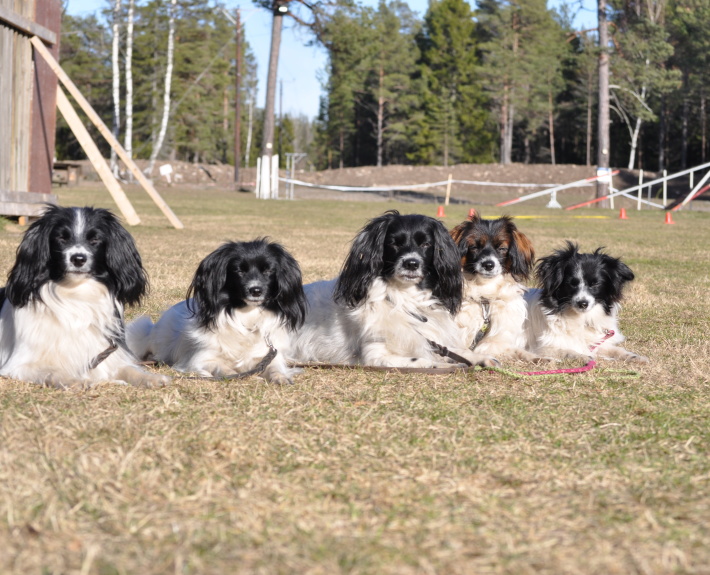What makes the Phalene Unique?
The Phalene Dog standard is exactly the same as the the standard of the Papillon dog, with the ears as the only exception.The ears should be set against the head exactly the same as the Papillon ears . Notice that the ear of a Phalene dog has a slight lift at the base of the ear, before it falls.
Breed Groups
Page Contents
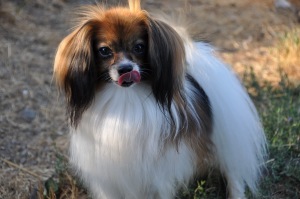
Is the Phalene Right For You?
The Phalène [French for ‘moth-eared’] is a toy dog breed also known as the Continental Toy Spaniel (Epagneul Nain Continental). Phalène is the drop-eared variety of the Papillon, [French for ‘butterfly-eared’] dog. Both varieties can occur in the same litter. Phalène often is confused with the Cavalier King Charles spaniel. Designer dog breeders refer to the Phalène/Papillion and Cavalier hybrid as “Cava-lon (Cavallon)”.
In 5 Words
- Alert
- Friendly
- Happy
- Intelligent
- Lively
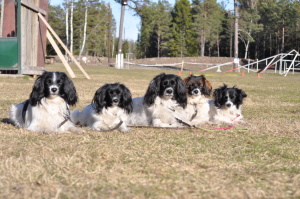
Characteristics
Learn About the Phalene
Description
General Description
Phalenes look exactly like a Papillon with one very distinct difference that separates the two breeds. A Phalene is known to have a different look when it comes to its ears. Papillons are well-known for having the butterfly look to their ears. A Phalene will have drop ears instead of those that stand up all the time. For this reason, there is a distinction between the two types.
Other than the ears, the two breeds look alike. The Phalene is very small, normally only reaching eight to eleven inches in height and weighing seven to ten pounds. They have a small head and muzzle with very dark, round eyes and a long tail that curls back over the body and is covered with long hair. It is single coated with frills on the ears, chest, tail and backs of the legs and is most often white with patches of a variety of other colors.
Short History of the Phalène
The Phalène is the earliest form of the Papillon; the appearance of the erect-eared variety was not documented until the 16th century, by which time the Phalène had been portrayed in numerous paintings, particularly in portraits of the wealthy by Old Masters and their students. Belgium, France, Spain, and Italy have all been credited with the creation or development of Butterfly Dogs. The Papillon gained popularity after the turn of the nineteenth century. By the middle of the 20th century, the Papillon’s popularity had far outstripped that of the Phalène, which sank low enough into obscurity to become endangered. Fortunately, the breed had its fanciers and did not slip into extinction. At some point the variety was named phalène, or ‘night moth’.
The 21st century has seen a revival of interest in the Phalène, with its fanciers pointing out that in countries where it is judged together with the Papillon, judges must be familiar enough with the breed standard to appreciate the qualities of a well-bred Phalène, and not confuse its dropped ears with those of a semi-erect eared Papillon, which would suggest a conformation fault.
Temperament
The Phalene is a happy, lively, outgoing, affectionate lapdog who also loves to run and play–especially outdoors! He loves to cuddle and give kisses, and can be a calm, gentle and patient companion. But he’s also a high-energy, fast-moving, go-getting athlete who needs a fair amount of exercise. He’s always ready to play in the house and romp and roll around on the floor. He loves to take long walks, or to compete in dog-sports like agility. He is extremely easy to train and highly obedient: he has been named the number one toy obedience breed.
Caring for Your Phalene
Grooming & Bathing
He only needs an occasional brushing. But you might find yourself brushing him more often, however, to remove all the loose hair he will otherwise shed around your home.
Exercise & Training
He needs a daily walk and should always be leashed when outdoors, or allowed to play in a safely fenced area. You will need to check for small openings and holes in your fence that might allow him to get out, He is also a fast-moving, high-energy, go-getter athlete who requires a fair quantity of work outs. This small dog is always prepared to play, roll around and romp on the floor. He likes to get long walks, or to take part in agility dog-sports. He is awfully easy to train and extremely obedient as he is very keen to please and is quick to learn any new tricks. He desires a daily walk and he should all the time be leashed while outdoors, or be left to play in a fenced area. He needs to supervision around bigger dogs but can be fine with cats especially if raised with them. Phalene is okay with smaller dogs.

